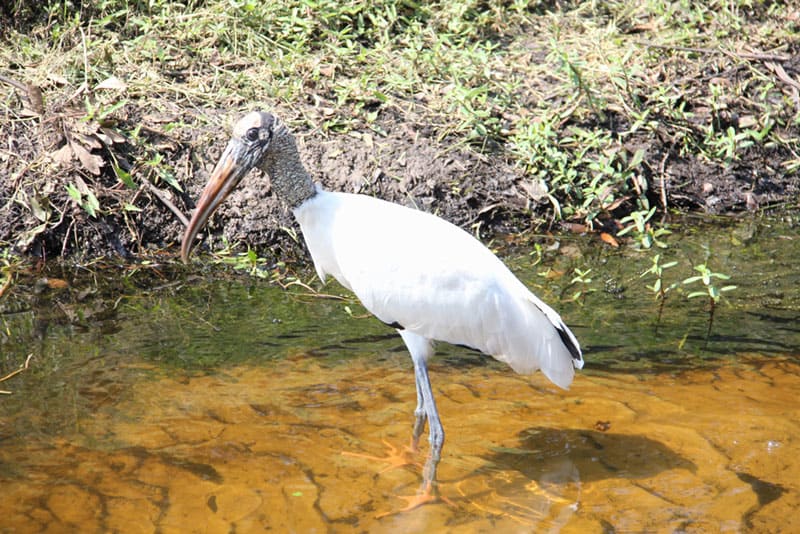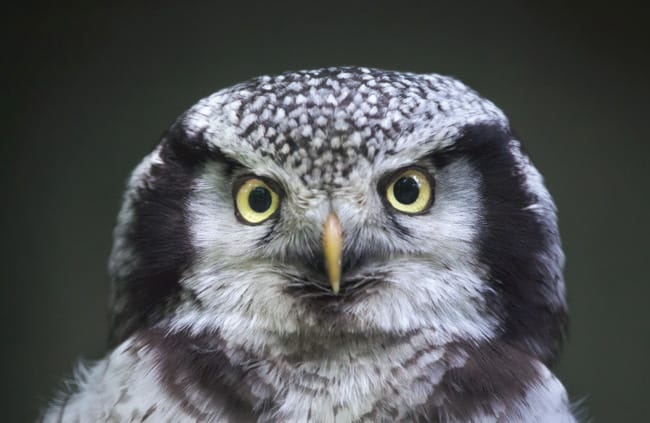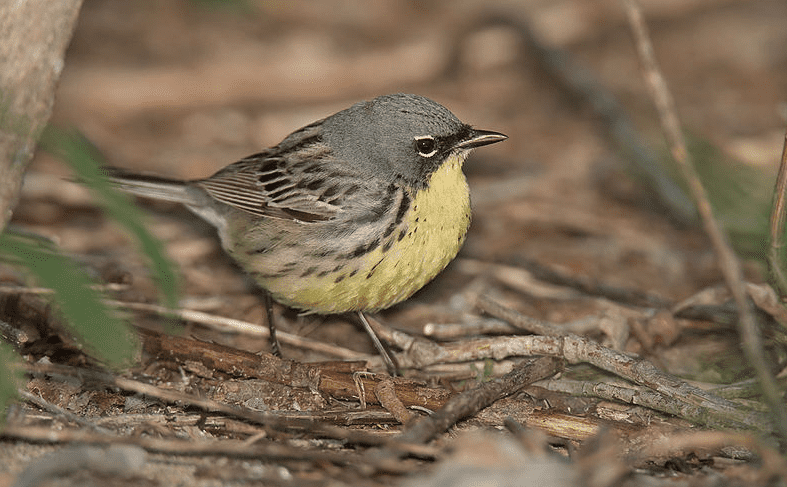1. Wood stork
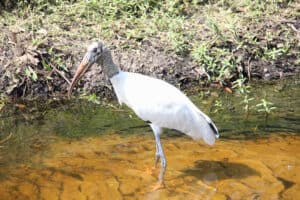
Large wading birds that stand nearly 40 inches tall. The adults are easily recognized by their white body, bald blackish head, and prominent down-curved bill. Soaring birds display sharply contrasting black flight feathers on their long broad wings and a black tail. Wood storks are specialized feeders, requiring a water depth of 10 to 20 inches for foraging. Birds capture fish by a unique tactile feeding strategy known as “tacto-location.”
This species forages by sweeping their open bill through the water. Upon touching a fish, the bill snaps shut with incredible speed. Breeding populations of this federally endangered species have gradually shifted northward in recent years. Today nesting occurs at various coastal locations in the state, the largest concentrations occurring in the ACE basin region. Wood storks form rookeries, and typically build their nests in the tops of tall cypress trees over open water.
2. Swallow-tailed kite

A beautiful raptor measuring 23 inches in length. It is unmistakably recognized by its strikingly patterned black-and-white plumage that includes a long forked tail and long slender wings. It is an uncommon, local breeding resident of South Carolina, occurring mainly in mature river swamps. In this habitat breeding pairs often select the tops of tall pine trees for nesting. The swallow-tailed kite is commonly seen foraging in small groups.
Winged insects, including numerous dragonflies, constitute favorite foods as do various lizards and small snakes that are snatched while on the wing. The Santee Delta Wildlife Management Area near Georgetown and the Francis Marion National Forest in Charleston County are good places to look for this beautiful species. Birds occur in summer, with individuals typically arriving in the month of March and departing by early fall.
3. Wilson’s plover

Coastal shorebird measuring 7 ¾ inches in length. The male is dark sandy brown above, white underneath, and is marked by a black breast band. The female is overall lighter in color and has a brownish breast band. Both have a fairly long black bill, being much heavier in comparison with other plover bills. The call is a musical chirping whistle note. This species is a summer resident of the sandy beaches of barrier islands and inlets, returning each year in early March.
The nest is a simple shallow depression on an exposed shelly beach flat. Against this substrate, the three eggs and young are remarkably camouflaged. Although camouflage provides the main protection against predators, the young, if really threatened, are quite elusive, being surprisingly agile and quick. This species’ population has suffered a decline in recent decades, attributed in part to nesting disturbance and habitat loss.
4. American oystercatcher

A large striking shorebird measuring 18 ½ inches in length. It is easily recognized by its black head and neck, dark brown back and wings, white underparts, and long heavy-set bill, which is bright reddish orange. Birds in flight reveal conspicuous white wing stripes and tail patch. This species is a year-round resident of the coast, seldom straying far from shell banks that provide nesting, roosting, and foraging sites. The Cape Romain National Wildlife Refuge contains some of the most important oystercatcher habitat on the Atlantic Seaboard.
Many hundreds of birds reside here in winter and nest as well, although in much lower numbers than based on historical records. The oystercatcher feeds primarily on mollusks, especially the raccoon oyster. A foraging bird quickly strikes down on open bivalves with its uniquely shaped bill, cutting the abductor muscle, thus gaining easy access to food.
5. Red-cockaded woodpecker
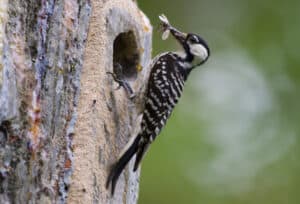
U.S. Fish & Wildlife Service, Southeast Region
This endangered 8 ½-inch-long woodpecker is best recognized by its black-and-white patterned back, black cap, and white cheek patch. The tiny red tuft of the male is seldom visible. This species occurs as a year-round resident of open pinewoods in the south, particularly favoring stands of longleaf pines having a sparse understory. Birds occur in small family groups called clans. They are often quite vocal, uttering harsh raspy skritt notes. Unlike other woodpeckers, this species excavates cavities in live pines, particularly trees infected with red-heart disease.
These nest trees are quite distinctive, being easily recognized by having a white coating of pine resin around the cavity and oozing from sap wells drilled by the birds. This sticky sap is thought to discourage snakes and other predators. Wildlife managers often use prescribed fire as a tool to maintain suitable habitat for this species.
6. Acadian flycatcher

A small drab flycatcher, 5 ¾ inches in length. It is olive-green above and pale olive-gray on the breast, merging to pale yellow underneath. Characteristic markings include a pale eye ring and two buffy white wingbars, otherwise it is quite nondescript. The male delivers his simple, two-syllabled song pwit-seaa from an exposed perch in the understory.
This species is a common inhabitant of river forests, damp woods, and swamplands throughout the state. In all areas of its range it requires a fairly developed understory for nesting; usually rhododendron in the mountains or iron wood (Carpinus) in the piedmont. Its greatest density occurs in the hardwood swamps of the coastal plain. The nest, which typically contains three eggs, is a poorly constructed affair of local material simply draped over a forked branch, often over water or an open trail. Birds occur here from April through October.
7. Brown-headed nuthatch
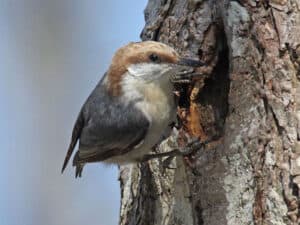
This tiny bird measures 4 ½ inches in length. It is blue-gray above and has a wash of buffy white across its underparts. Its distinctive marking is its brown cap edged by a darker line through the eye. Its squeaky call resembles the sound made by a children’s rubber toy. It is a common, characteristic resident of the extensive pinewoods of the south.
This nuthatch occurs most abundantly year-round in the longleaf pine forests of the coastal plain, but it also inhabits scattered pine stands in the piedmont and foothills region of the state. Birds typically travel in small groups, foraging upside down among the branches of a pine, probing needle bracts and cones for tiny arthropods. It is also a common visitor to backyard bird feeders. This species builds a nest of soft plant material stuffed into a cavity of a dead branch stub or sometimes a bluebird box.
8. Swainson’s warbler
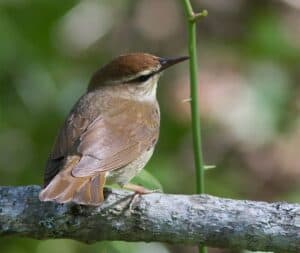
A skulking, somber-plumaged wood warbler measuring 5 ½ inches in length. It is a rather plain-looking bird; dull olive-brown above and light gray underneath, its only distinctive field marks being its dirty white eyebrow stripe and rusty brown cap. A migratory species, it occurs in two distinct areas of the state, inhabiting rhododendron thickets along mountain stream forests and bottomland canebreaks of coastal plain swamps and floodplains.
Within these impenetrable thickets it is more easily heard than seen. The male’s song is a series of loud slurred whistles, resembling that of the Louisiana waterthrush. The Swainson’s warbler spends much time foraging on the ground for insects, sifting through leaves and debris with its long bill. Its well-hidden nest, consisting of a large mass of dead leaves, is tucked into a low fork of a shrub or vine tangle and contains three to four eggs.
9. Bachman’s Sparrow
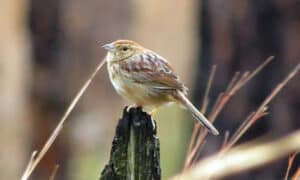
This fairly large 6-inch sparrow is an inhabitant of open pinewoods with scattered shrubs. It is a grayish, fairly nondescript bird; streaked above with dark chestnut brown, dull gray across the breast, and whitish on the belly. Its distinguishing characteristics include a dark eye stripe and a fairly long rounded tail. The Bachman’s sparrow has special significance in South Carolina because it was discovered here by the naturalist Dr. John Bachman and named in his honor by John James Audubon.
This secretive bird is most easily observed by locating singing males in favored long leaf pine habitat. The melodic song is a clear introductory whistle followed by a musical trill. The nest of this sparrow is an unusual well-hidden structure built mainly with grass stems. Typically placed at the base of a shrub or stump, it is arched over to conceal the white eggs and young and has a hidden passageway entrance.
10. Painted Bunting
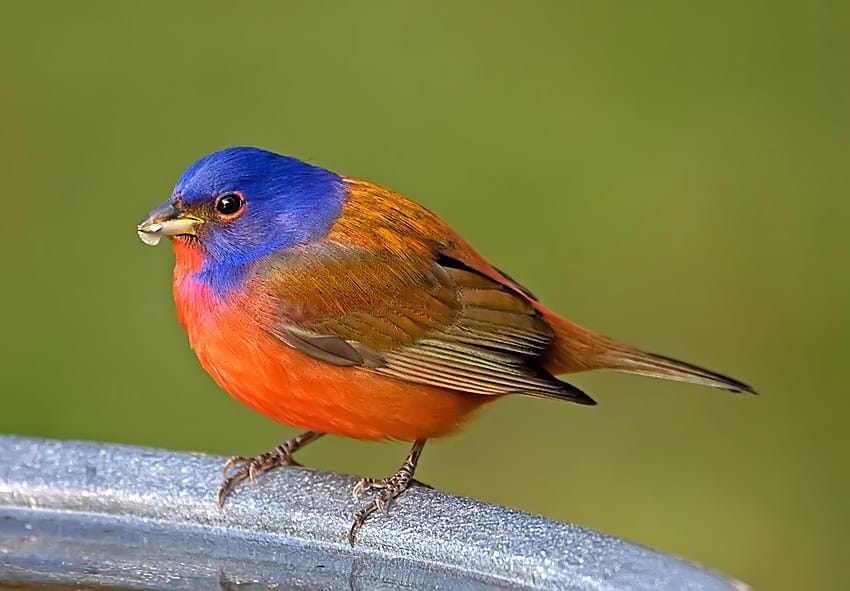
This brilliantly colored species measures 5 ½ inches in length. The male painted bunting is unmistakable, having a purplish head and neck, green back, and bright red under parts and rump. The female is quite different, being overall yellowish. This bunting is a fairly common summer resident along the coast and occasionally to scattered inland locations. It most commonly occurs on barrier islands where birds inhabit shrub thickets and edges bordering wetlands and dune fields.
Male birds typically arrive in mid-April, a week or two before the females, and quickly establish a territory. They are known to be fiercely territorial, with some documented disputes between males even having resulted in death. The song, which is delivered from an exposed perch, is a musical series of rapid warbling notes. Within its range, painted buntings are often favorite backyard birds and are common visitors to seed feeders.

